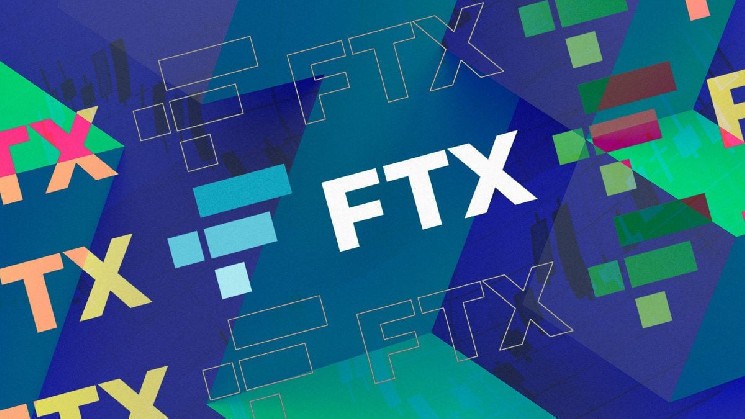What the FTX creditor matrix does — and doesn’t — tell us about the exchange’s bankruptcy

FTX filed a massive creditor matrix in bankruptcy court this week, naming law firms, luxury restaurants, media outlets and state government agencies as creditors that may be owed money by the troubled crypto exchange.
But the 115-page creditor matrix doesn’t tell the whole story.
Not every entity on the procedural document is a confirmed FTX creditor, lawyers say. Millions of customer names remain under seal.
“Inclusion of a name on the matrix does not necessarily indicate that the party is a creditor of any of the debtors,” FTX lawyers wrote in a court filing on Friday. “The matrix is intended to be very broad for service purposes and includes parties who may appear in the debtors’ books and records for any number of reasons.”
In other words, the new FTX creditor matrix serves as a large collection of addresses that the court can use for mailing notices in the future.
“It is a purely ministerial document that all debtors in all bankruptcy cases are required to prepare and file with the court and the office of the United States Trustee,” said Joseph Moldovan, a partner at the law firm Morrison Cohen.
A wide net
Lawyers compiling this type of creditor list typically note every entity on a firm’s account payable list, its investors and “every government agency that could conceivably have an interest in the case,” Moldovan said.
Complicating matters, new FTX CEO John Ray III has said that the exchange did not keep reliable business records, making the process of piecing together FTX’s financial dealings more difficult.
Government agencies could be listed in the matrix for a number of reasons. FTX may owe taxes in certain jurisdictions, or the crypto giant may have been paying remote employees in a particular state.
FTX filed for bankruptcy protection in November, and its former CEO, Sam Bankman-Fried, is facing criminal fraud charges in a separate case.
The list of possible FTX creditors ranges from the Alaska Department of Revenue and the Colorado Secretary of State’s office to the Miami Beach location of the exclusive Carbone restaurant. The matrix lists a host of legal and lobbying firms, including the Buckley law firm and government affairs firm Rich Feuer Anderson.
Media outlets including CoinDesk and The Wall Street Journal also appear on the matrix, which could be due to subscriptions the company held or advertising deals.
“The list merely provides names and addresses and does not really tell us what type of claims or amount of claims the listed creditors may hold,” said Stephanie Assi, a lawyer at Carrington Coleman in Dallas whose practice includes bankruptcy and digital assets.
The creditor matrix shows the wide web of crypto-linked firms that may make claims in the FTX bankruptcy case, including Kraken Ventures, Binance Capital Management, Coinbase Global and the now-bankrupt Genesis, BlockFi and Voyager. Venture capital firm Sequoia Capital, which has said it lost $150 million on FTX, appears on the list, as does the investment firm Willoughby Capital.
Dozens of banks are listed on the creditor matrix, including Wells Fargo, the Central Bank of Dubai, the Bank of Cyprus, the Central Bank of the Bahamas, BCB Bank, Deutsche Bank AG, HSBC Bank, and the Royal Bank of Canada.
Tampa Bay Buccaneers quarterback Tom Brady and former Boston Red Sox designated hitter David Ortiz – who have been targeted by a separate FTX-related class action lawsuit – are named in the new filing. The matrix also includes luxury hotels, meal delivery services and streaming platforms. The Coachella music festival, Blue Bottle Coffee, Airbnb, Uber Eats, Netflix, Doordash, Nobu Hotel and the W Miami hotel appear on the list, as do several resorts in the Bahamas including the Margaritaville Resort.
“We knew that they were living the good life, so there’s Nobu and Coachella,” said Jeffrey Blockinger, general counsel at the Web3 firm Quadrata, Inc. “We knew that they had deals with celebrities.”
The names we don’t know
Although the creditor matrix offers a glimpse at the various companies and individuals who might make claims in the bankruptcy case, millions of FTX customers are still unknown to the public.
“What’s ultimately going to be the more interesting bucket is the actual people who had accounts at FTX,” Blockinger said. “That’s all of the redacted names.”
Nearly 9.7 million FTX customer names are redacted in the case, according to court documents. A Delaware bankruptcy court judge ruled earlier in January that the names would stay redacted for three more months, despite objections from the U.S. Trustee overseeing the bankruptcy and a group of news organizations. Judge John Dorsey is expected to reconsider the redaction issue in a court hearing sometime in March.
Even the names of some of FTX’s top creditors are still redacted, Assi noted.
“Given the circumstances that led to the FTX bankruptcy filing, information that normally would have been previously gathered is being investigated and uncovered as the bankruptcy unfolds. We can expect to learn more in the upcoming months as John Ray and his team continue to move through this process,” Assi said.
Disclaimer: Beginning in 2021, Michael McCaffrey, the former CEO and majority owner of The Block, took a series of loans from founder and former FTX and Alameda CEO Sam Bankman-Fried. McCaffrey resigned from the company in December 2022 after failing to disclose those transactions.






 Bitcoin
Bitcoin  Ethereum
Ethereum  Tether
Tether  USDC
USDC  Dogecoin
Dogecoin  TRON
TRON  Cardano
Cardano  Chainlink
Chainlink  Stellar
Stellar  Bitcoin Cash
Bitcoin Cash  Hedera
Hedera  LEO Token
LEO Token  Litecoin
Litecoin  Cronos
Cronos  Monero
Monero  Dai
Dai  OKB
OKB  Ethereum Classic
Ethereum Classic  Algorand
Algorand  VeChain
VeChain  Cosmos Hub
Cosmos Hub  Gate
Gate  KuCoin
KuCoin  Tether Gold
Tether Gold  Stacks
Stacks  Tezos
Tezos  Theta Network
Theta Network  IOTA
IOTA  Zcash
Zcash  NEO
NEO  TrueUSD
TrueUSD  Polygon
Polygon  Qtum
Qtum  Dash
Dash  Decred
Decred  Synthetix Network
Synthetix Network  Basic Attention
Basic Attention  Zilliqa
Zilliqa  0x Protocol
0x Protocol  Ravencoin
Ravencoin  Siacoin
Siacoin  Holo
Holo  DigiByte
DigiByte  Ontology
Ontology  Enjin Coin
Enjin Coin  Waves
Waves  Nano
Nano  Numeraire
Numeraire  Status
Status  Hive
Hive  Huobi
Huobi  Lisk
Lisk  Steem
Steem  Pax Dollar
Pax Dollar  BUSD
BUSD  OMG Network
OMG Network  NEM
NEM  Ren
Ren  Augur
Augur  Bitcoin Gold
Bitcoin Gold